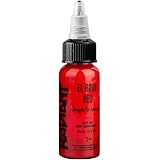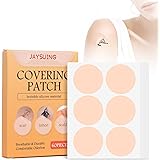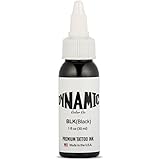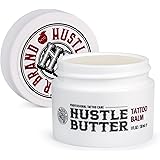Did you know that proper new tattoo aftercare is absolutely crucial for ensuring your body art heals beautifully and lasts a lifetime? Neglecting the initial healing period can significantly compromise the vibrancy and integrity of your new tattoo, potentially leading to dullness or even complications.
As the video above highlights, understanding the fundamental steps for tattoo healing is paramount for anyone with fresh ink. This guide will expand upon those essential tips, providing a comprehensive resource to complement the insights shared by your tattoo artist.
Understanding the Initial New Tattoo Aftercare Phase
The first few weeks after getting a tattoo are critical, requiring diligent attention and care. Your new tattoo is essentially an open wound, making it susceptible to bacteria and environmental factors. Consequently, a consistent aftercare routine is vital to prevent infection and promote optimal healing.
The primary goal during this phase involves keeping the area clean, moisturized, and protected from various external irritants. Adhering to these principles will significantly enhance your tattoo’s appearance and contribute to its longevity. Furthermore, patience is a virtue, as rushing the healing process can lead to undesirable outcomes.
The Importance of Gentle Cleaning for Your Tattoo
The video above rightly stresses the importance of cleaning your tattoo twice daily, a fundamental step in effective new tattoo care routine. Select a mild, unscented antibacterial soap to gently wash the tattooed area. Imagine if you used harsh chemicals; such an action could irritate sensitive skin and hinder the healing process, potentially causing damage to the delicate new ink.
To clean your tattoo effectively, create a good lather with the soap in your clean hands before applying it to the tattoo. Gently rub the soapy lather over the entire tattooed area, ensuring you remove any excess ink, blood, or plasma that may have accumulated. Afterwards, rinse the tattoo thoroughly with lukewarm water until all soap residue is completely gone. Pat the area dry using a clean paper towel or a designated clean towel, as rubbing can cause irritation or pull away scabs.
Hydrating Your Skin: Choosing the Right Moisturizer
Following a thorough cleaning, the next critical step for tattoo skin hydration involves moisturizing the area. As the video suggests, a specialized tattoo aftercare product or a gentle, fragrance-free moisturizer like Cetaphil is ideal. This step helps prevent the skin from drying out, which can cause cracking and uncomfortable itching, thereby assisting in a smoother healing journey.
Apply a very thin layer of your chosen moisturizer over the entire tattoo. The key is to use just enough to hydrate the skin without suffocating it. Imagine applying a thick, greasy layer; this could trap moisture and create a breeding ground for bacteria, potentially leading to infection. Instead, allow your skin to breathe while receiving adequate hydration.
Essential Precautions During Tattoo Healing
Beyond cleaning and moisturizing, several crucial precautions must be observed during the 30 to 40-day healing period. These measures are designed to protect your new artwork from damage and ensure a vibrant, well-healed result. Neglecting these warnings can easily compromise your tattoo’s final appearance and health.
By diligently following these guidelines, you empower your skin to regenerate effectively and maintain the crispness of your tattoo’s design. Consequently, your commitment to these precautions will directly impact the longevity and aesthetic quality of your body art. Remember, proper tattoo healing tips extend beyond just topical application.
Avoiding Heavy Physical Exertion
The video advises against excessive heavy weightlifting or strenuous physical activity during the healing phase. When you engage in intense exercise, your muscles expand and contract, potentially stretching the skin around your new tattoo. Imagine your skin stretching excessively, this action can cause scabs to crack prematurely or even damage the delicate new skin forming over your ink.
Furthermore, vigorous activity leads to increased sweating, which can introduce bacteria to the healing tattoo and create an overly moist environment. Therefore, it is prudent to modify your workout routine or temporarily abstain from activities that cause significant sweating or skin stretching. Prioritizing rest allows your body to dedicate its energy to repairing the tattooed area.
Steering Clear of Water Immersion and Swimming
One of the most vital pieces of advice for preventing tattoo infection involves avoiding swimming and prolonged water immersion. Public swimming pools, hot tubs, and even natural bodies of water harbor numerous bacteria that can easily enter an open, healing tattoo. Imagine exposing your new tattoo to chlorinated water or a lake; these environments are breeding grounds for pathogens that can cause severe infections.
Moreover, soaking your tattoo can also lead to the ink leaching out, causing the design to fade or blur. Short, quick showers are acceptable, but always ensure your tattoo is not submerged for extended periods. Protect your new tattoo by keeping it dry and clean, especially during the initial healing weeks.
Protecting Your Tattoo from Direct Sunlight
Direct exposure to sunlight is another significant threat to a healing tattoo, as mentioned in the video. Ultraviolet (UV) rays can not only cause a sunburn on your delicate new skin but also significantly accelerate the fading process of the ink. Imagine spending hours under the scorching sun with a fresh tattoo; this exposure can lead to premature fading and a dull appearance, regardless of how well it was initially done.
During the healing period, it is best to keep your tattoo covered with loose, breathable clothing when outdoors. Once your tattoo is fully healed (after approximately 30-40 days), consistently apply a high-SPF sunscreen to protect it from future sun damage. This proactive measure ensures the vibrancy of your artwork for years to come.
What to Expect During the Healing Process
The new tattoo healing timeline typically spans several weeks, with different stages of recovery. Initially, you might experience some redness, swelling, and light bleeding or oozing, which is entirely normal. Over the first few days, a thin layer of scab will form over the tattoo; resist the urge to pick at it, as this can pull out ink and cause scarring.
As the tattoo continues to heal, it may become itchy. Gently tapping the area rather than scratching can help alleviate this discomfort. By adhering strictly to the new tattoo aftercare guidelines provided, you are setting your tattoo up for the best possible outcome, resulting in a vibrant and lasting piece of art.











